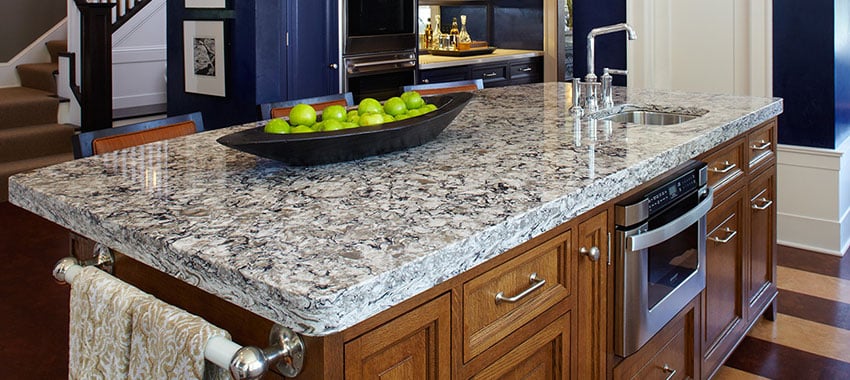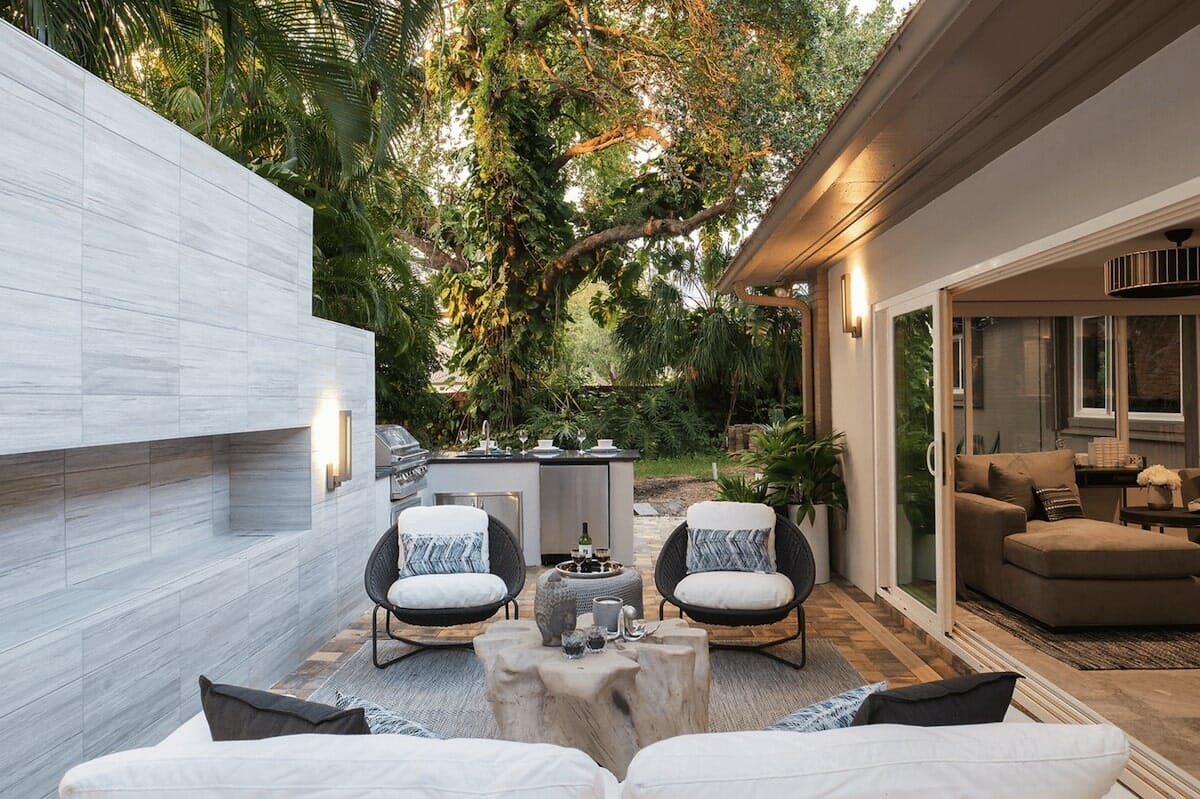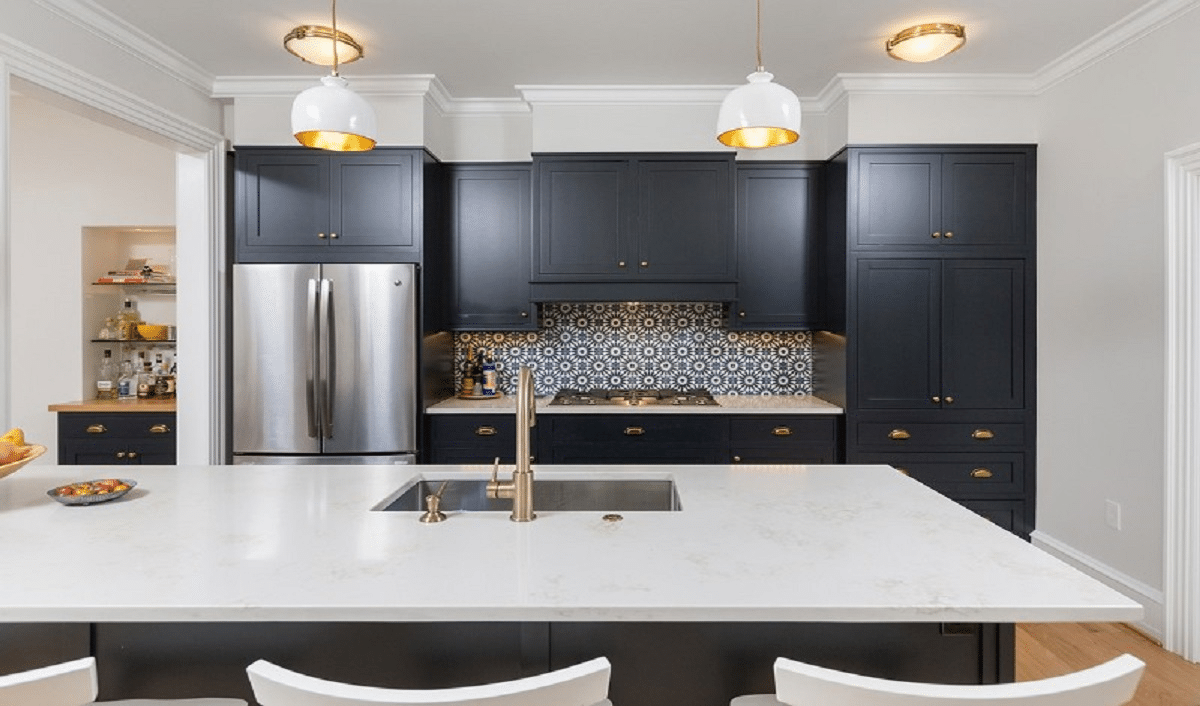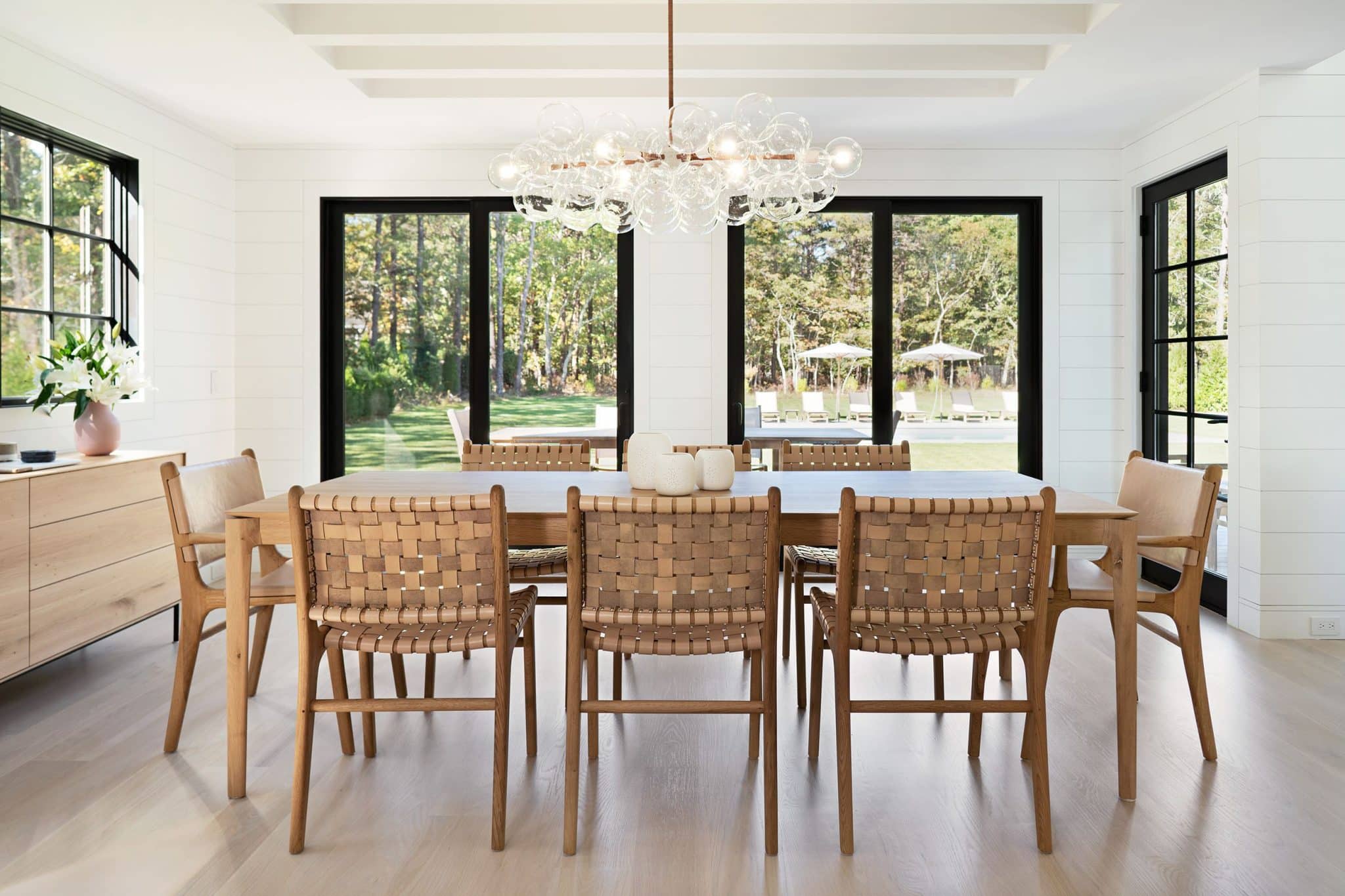7 Countertop Edge Styles to Enhance Your Kitchen
When revamping a kitchen, counter top edge look, and design are crucial elements that impact the overall look of the space. One important decision to make when choosing countertops is the type of edge finish you want. Several options are available, each with unique characteristics and aesthetic appeal.
In this blog, we will explore six common countertop edges that might be the best choice for your kitchen.
We have you covered whether you are looking for a classic, formal, or decorative edge. So, let’s get started!
Types of Counter Top Edges
1. Straight Counter Top Edge
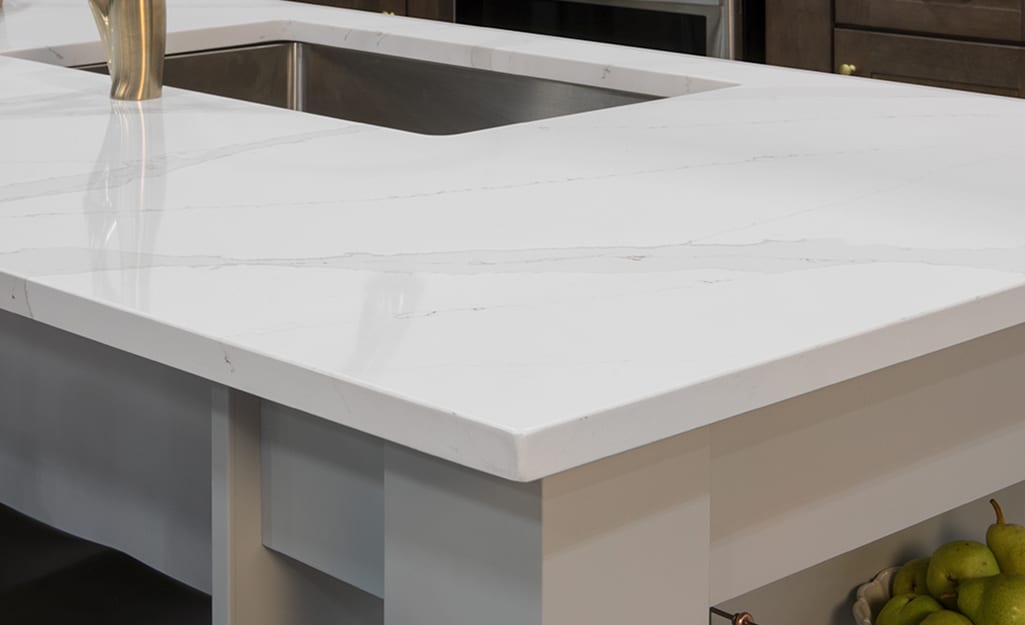
A straight edge is a top choice to give your countertop a clean, sleek, and timeless look. With a straight edge, you can say goodbye to those rough and jagged edges to get a refined finish.
Plus, this type of edge is super versatile, so it can be made with various countertop materials, including granite, quartz, marble, and concrete. So no matter what your kitchen style is, a straight edge will complement it.
And the best part? It’s super easy to maintain and clean! With its simple design, there’s no need to worry about dirt and grime getting stuck in intricate details or curves.
2. Beveled Counter Top Edge

A beveled edge countertop is a type of countertop that has a sloping or angled edge. This type of edge is created by cutting the top of the countertop at an angle, typically at a 45-degree angle, to create a smooth and finished look.
Beveled edge countertops are available in various materials, including granite, marble, quartz, and more. Beveled edges are often preferred for their aesthetic appeal, as they can add visual interest and depth to a countertop.
They are also popular because they can help to conceal minor imperfections and chipping that may occur on the edge of the countertop over time.
3. Bullnose Counter Top Edge
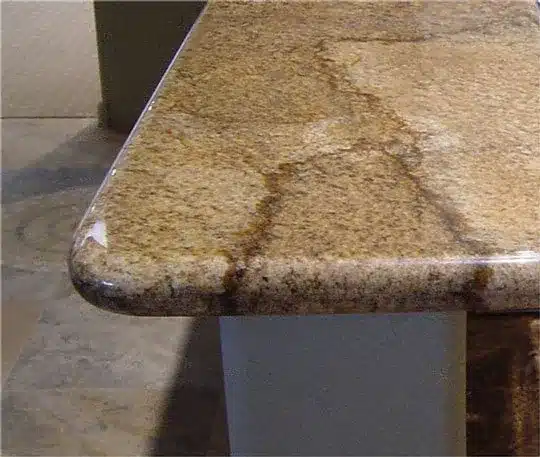
A bullnose edge is a countertop edge that features a curved, rounded edge slightly raised above the countertop surface. A bullnose edge can add a softer, more refined look to a countertop, particularly in comparison to a straight, square edge.
A bullnose edge can be more durable and less prone to chipping or breaking than a straight edge. As a result, it is a popular choice for formal or traditional kitchen designs and bathroom vanity tops.
They are also a practical choice for countertops used for food preparation, as the rounded edge can be easier on the hands than the sharp ones.
4. Ogee Edge Countertop
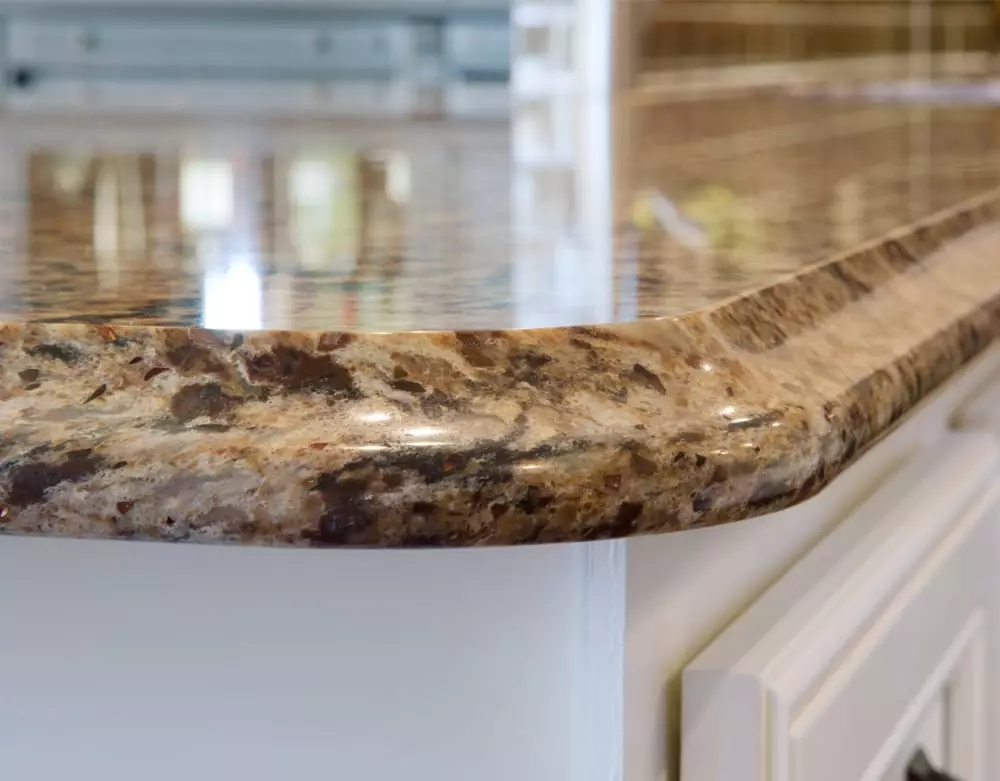
The ogee edge was popularized in the Victorian era and has been a popular choice for countertops. An ogee edge is a countertop edge that features a more complex, S-shaped curve that adds a decorative touch to the countertop.
One of the main advantages of an ogee edge is its decorative appeal. The S-shaped curve creates a visually exciting edge that can add a touch of detail and character to the countertop.
An ogee edge countertop requires careful handling and installation, as the delicate curves can be prone to chipping or damage.
5. Crescent-Style Counter Top Edge

A crescent edge countertop refers to a countertop with a crescent-shaped edge detail. This type of edge detail is created by rounding the corners of the countertop and smoothing the edges.
Crescent edge countertops can add a soft, elegant touch to a kitchen or bathroom and can help to create a more cohesive look if paired with other curved design elements in the space.
6. Eased Edge Countertop

An eased-edge countertop is a type of countertop that has a slightly rounded edge profile rather than a sharp, 90-degree angle. The edge is typically about 1/8 inch thick and is rounded off to create a softer, more subtle appearance.
Eased edges are often used in kitchen and bathroom countertops and other surfaces, such as tables and desks. Eased edges are popular because they are smooth to the touch, easy to clean, and provide a more modern, sleek look compared to other edge profiles.
7. Cove Edge Countertop
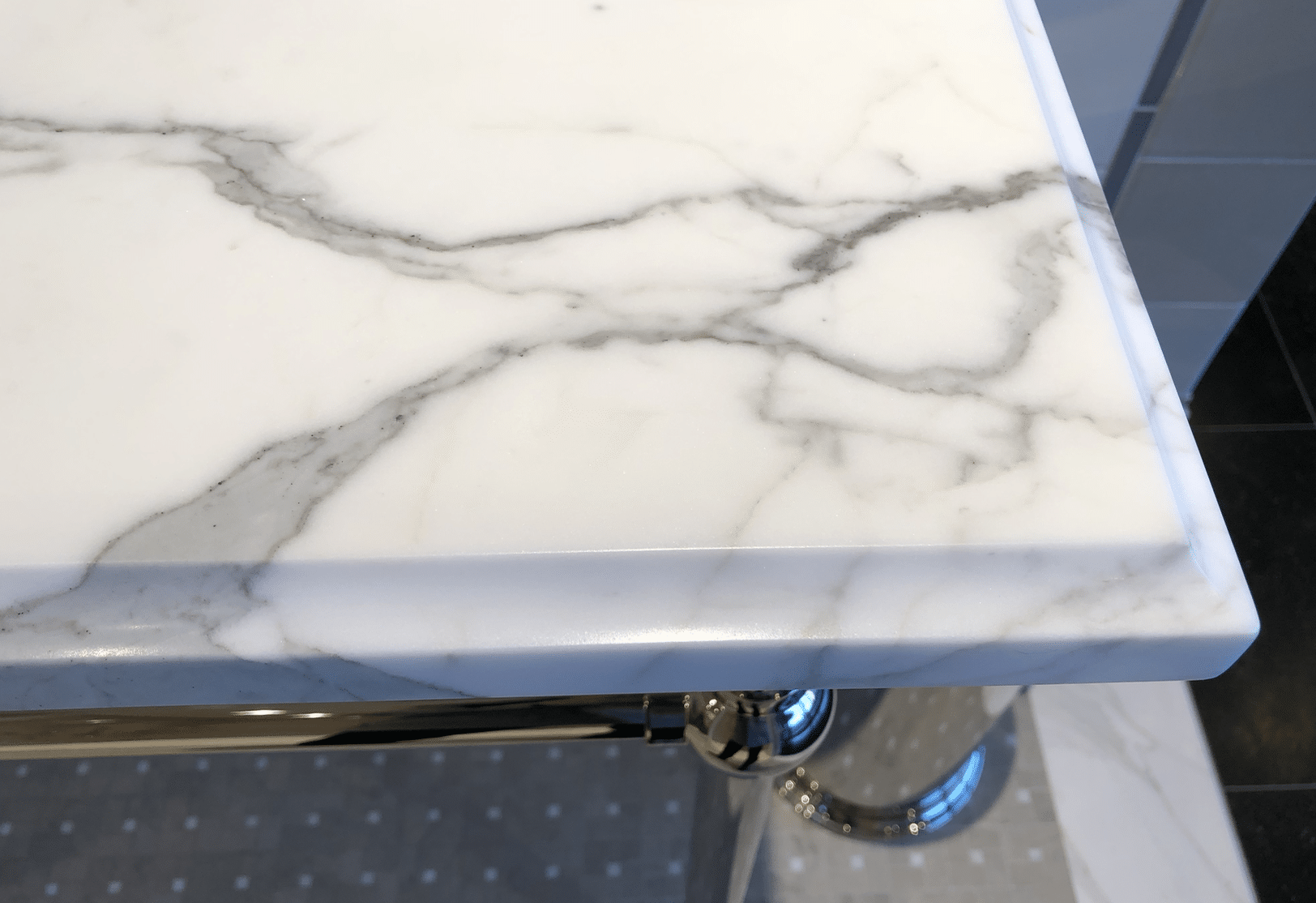
A cove edge is a type of edge profile used on countertops, particularly in kitchens and bathrooms. For example, cove edges are often used on edges near sinks and faucets, as they provide a more comfortable and ergonomic edge to lean against or rest your hands on.
Cove edges can be created using either a hand cove edge machine or a plunge cove edge router. These edges tend to have a more organic, irregular shape and may be preferred for their more artisanal, hand-crafted look.
How to Choose the Right Style for Counter Top Edge
There are several factors to consider when choosing the right style for countertop edges:
- Material: Different materials, such as granite, quartz, and laminate, have different edge options. Some materials are better suited to certain edge styles, so be sure to consider the properties of the material you are using.
- Use Case: Consider the function of the countertop. If it is used for food prep, you may want to choose a more practical edge style that is easy to clean and maintain. On the other hand, if the countertop is for decorative purposes, you may have more flexibility in your edge choice.
- Design: The edge style should complement the overall design of your kitchen or bathroom. Consider the style of your cabinets, backsplash, and other design elements in the room.
- Budget: Different edge styles can vary in price, so consider your budget when deciding.
It’s a good idea to speak with a professional or visit a showroom to see and feel the different edge styles in person before making a decision.
Conclusion: Counter Top Edge
Choosing the right countertop edge can significantly impact your kitchen or bathroom’s overall appearance and functionality.
There are many different edge options to choose from, including straight, beveled, bullnose, ogee, cove, and eased.
Each option has unique characteristics and can complement different design styles. Ultimately, the edge you choose will depend on your personal preferences and the overall aesthetic of your space.
It is essential to consider factors such as durability, maintenance, and cost when making your decision.
By understanding the different types of countertop edges and the benefits of each, you can choose the perfect edge to suit your needs and enhance the overall look of your space.
Frequently Asked Questions
What is the Standard Depth for Counter top Edges?
The standard depth for countertop edges is usually around 1-1.5 inches (2.5-3.8 cm). This depth is sufficient to provide a functional and aesthetically pleasing edge for most countertops. However, the actual depth of the edge may vary depending on the specific material and design of the countertop, as well as the homeowner’s or designer’s preferences.
It is essential to consider the intended use of the countertop and the desired aesthetic when determining the appropriate edge depth for a particular installation.
What Do I Put Between the Backsplash and Countertop?
There are a few different options for what to put between the backsplash and countertop in your kitchen or bathroom.
One standard option is to use silicone caulk. Silicone caulk is a flexible, waterproof sealant that can fill the gap between the backsplash and countertop. This helps to prevent water or other liquids from getting behind the backsplash and causing damage to the wall or countertop.
Another option is to use a trim piece or decorative filler strip.
Finally, you can leave the gap between the backsplash and the countertop. This can be a good option if the gap is small and there is no risk of water or other liquids getting behind the backsplash.
What Will Go in First: Backsplash or Countertop?
The order in which the backsplash and countertop are installed will depend on the specific installation process used and the materials used for the backsplash and countertop. It is common to install the countertop first and then the backsplash.
However, it is worth noting that there may be situations where it is more practical to install the backsplash first. For example, if the countertop material is particularly heavy or delicate, it may be easier to install it after the backsplash has been put in place.

